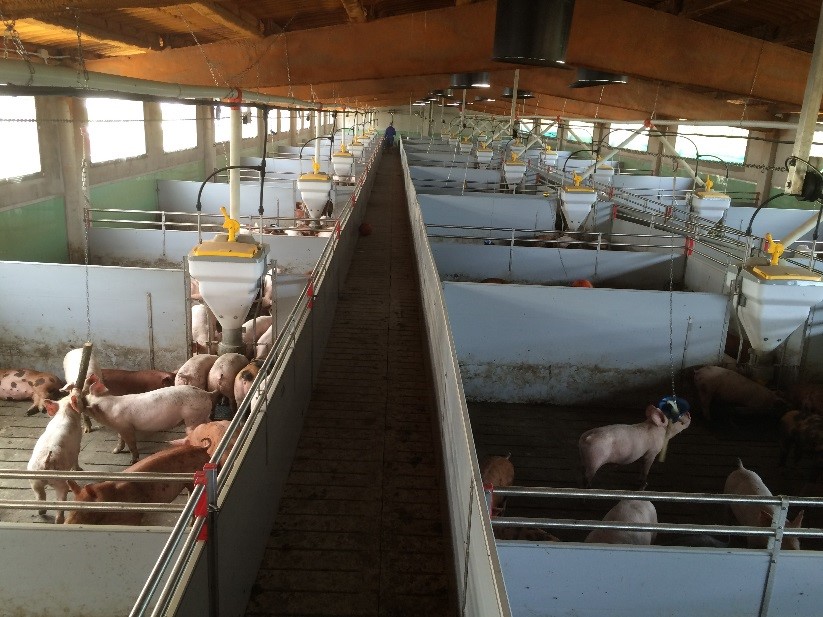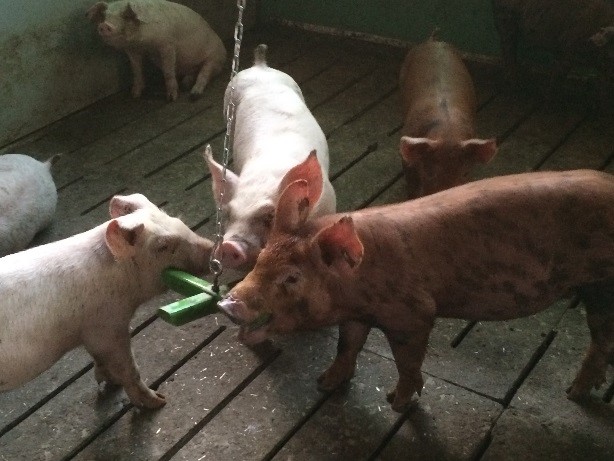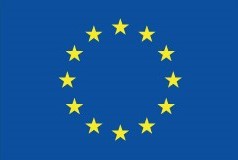- Home
- EU PiG – Novelty in enrichment material
EU PiG – Novelty in enrichment material
Feed conversion ratio has improved, and pigs have become easier to handle since farmer Granja Rosa began changing the type of environmental enrichment in each pen every day on her finishing unit. This is to promote a greater sense of novelty for the 616 pigs and help reduce the risk of tail biting.
Ambassador: Granja Rosa, Spain
Publication date: June 2019
Theme: Animal welfare
Challenges: Enrichment materials
The system involves a rotatory system of chains attached to the roof which moves hanging enrichment material from one pen to another. Enrichment materials include pieces of wood, balls, straw containers, plastic rings and hemp ropes.
Rotatory system to improve enrichment
Benefits
- Incidence of tail biting is less than 1%, with most pigs arriving on the farm at 8–10 weeks old having already been tail docked
- They receive prices 2–3 times higher than conventional farms as they produce to particular standards under a quality label, ‘Porc Ral Avinyó’. The better prices more than cover the cost of production of Porc Ral d’Avinyó farms which is 13% higher than for conventional pork
- Comparing like with like, the unit’s total costs are 1.3% lower per kg hot slaughter weight than the typical Porc Ral d’Avinyó unit (€ 1.52/kg vs € 1.54/kg). The variable costs per kg slaughter weight were 5% lower for this unit, while the fixed costs were 23% higher
- The average mortality on this farm is 1% compared with an average of 2.2% for similar finishing farms producing for Porc Ral d’Avinyó (the average for a commercial farm in Spain is 3.6%)
- Finishing daily liveweight gain is 788 g/day which is 8% higher than on other Porc Ral d’Avinyó farms (it is 701 g/day on average Spanish farm)
- The feed conversion ratio of her pigs is on average 0.26% better compared to the other farms supplying Porc Ral d’Avinyó
- Since putting the system in place, vet costs are 5% lower
Costs
- The initial investment to install the system was about €6000 per 600 pig places, so assuming 10 years of depreciation, the cost is €1/pig place year
- The cost of the materials is about €600 per year while maintaining the system costs €50 per year
- They produce their own straw which helps keep costs manageable
- Extra labour is about 1.5–2 hours per day
Rotatory system in practice
- Pigs are housed in groups of 12 pigs per pen, with one enrichment material in each pen
- Each day the enrichment is changed via the rotatory system of chains
- Different enrichment materials are used according to the age of the pigs
- There are two playroom pens with a combination of different materials, to which the pigs are moved every three days
- There are also extra pens with deep straw to provide another area to root in, to which the pigs are moved every three days
- Enrichment material is cleaned every time a new batch of fattening pigs goes into the shed. All materials are removed and kept in a large bucket of detergent for a day. Any remaining dirt on the materials is removed. Once the whole farm is empty and cleaned, the enrichment is hung up again and disinfected in place
Porc Ral Avinyó also has a study underway investigating a potential correlation between this enrichment strategy and the meat’s ultimate pH and product quality.
Case studies
Technical reports
 EU PiG
EU PiG
Housed in groups of 12 pigs per pen, with one enrichment material in each pen
 EU PiG
EU PiG
Pigs playing with enrichment tool suspended from the ceiling
Animal welfare best practice challenges
Strategies for dealing with piglets from hyperprolific sows
Strategies to reduce aggression between animals
The quality of the farm atmosphere
Contact us
To access more information, contact RPIG (Spain): Emma Fàbrega or EUPig@ahdb.org.uk
This project has received funding from the European Union`s Horizon 2020 research and innovation programme under grant agreement No 727933.
 Government logo
Government logo

